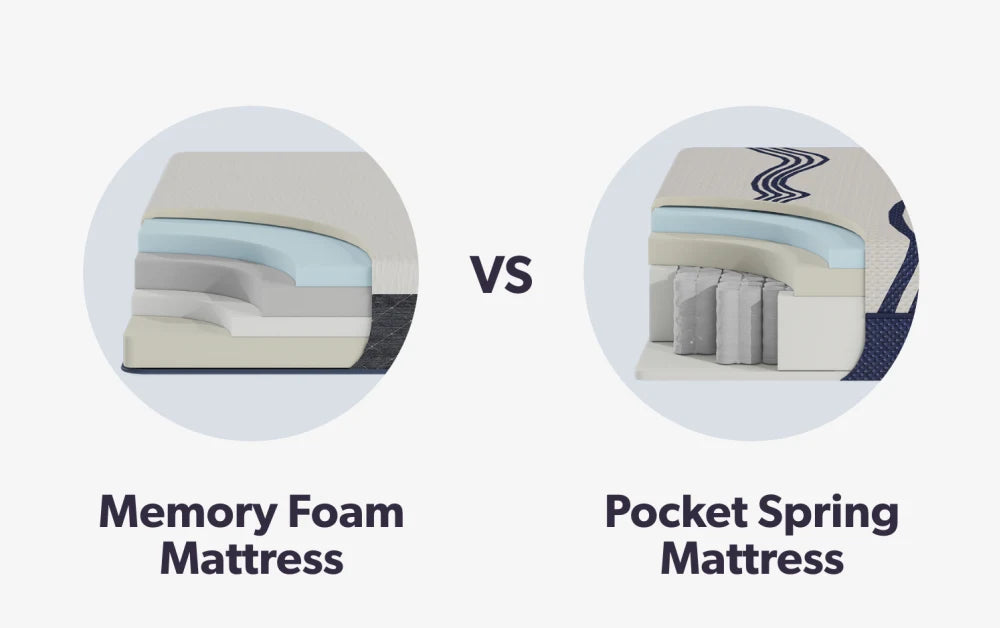Pocket spring mattresses and memory foam mattresses have both been around for a while now as alternatives to standard innerspring mattresses. While the two mattress types do offer some similarities, there are some very important differences to consider before choosing one over the other.
What’s inside
The first and most obvious difference between a pocket spring mattress and a memory foam mattress is what they are made of. Pocket spring mattresses are made up of hundreds of individual tempered springs, standing upright inside individual sleeves or “pockets”. Layers of comfort foam padding sit on top of this spring system, making for a comfortable, supportive mattress. Memory foam mattresses, on the other hand, are made up of treated polyurethane foam. The foam is dense, and absorbs energy and body weight very well.
Who they help
Another difference to consider is what type of sleeper you are and how each bed may help you. Both mattresses offer firm, supportive options for many sleeping needs, but differ in how this support feels while sleeping. Pocket spring mattresses are great for people who like supportive mattresses with a more firm feeling to them. The springs have a lot of positive response, and feel like they hold you up more than many other mattress types. On the other hand, the firm support from a memory foam mattress may be more comforting. Memory foam is just as supportive as a pocket spring mattress, but it supports by contouring itself to the sleeper’s body and relieving pressure.
How long they last
The average lifespan may be an important difference to some. While the individual coils in a pocket spring mattress allow for it to respond better to pressure, it also runs the risk of wearing these coils out faster. These coils may become depressed with the pressure over the years, and the mattress may sag and feel hard. Regular turning and avoiding things like jumping on the bed may help extend the lifespan a bit, but an 8-10 year old pocket spring mattress is very old. Memory foam mattresses tend to last quite long with proper care. It is not uncommon to see a 12 year old memory foam mattress with good quality foam– though at that point the buildup of body oils, sweat, and other contaminants is still enough reason to get a new mattress. Ideally, a memory foam mattress should be rotated regularly.
Heat
Heat is another important factor. Although many modern memory foam mattresses are much cooler than before, some people may still find them too hot. Pocket spring mattresses tend to be cooler, though the type of foam they use for the topper may also make a big difference.
Motion transfer
These mattresses are only slightly different in motion transfer. Memory foam mattresses are the kings of motion transfer. The “hugging” feeling the mattress gives also keeps it from transferring motion from one side of the bed to the other. This means it is highly unlikely that partners will wake each other, even if they toss and turn in their sleep. Pocket spring mattresses also have great motion separation, although not as much as memory foam. The individual pockets in the mattress allow for each spring to move and respond to pressure on its own, rather than shaking the whole bed. There are a number of things to consider when choosing between a pocket spring and memory foam mattresses. They have some similarities, but the differences are what makes people choose one over the other. It may be best to try them both out for yourself and see what you like best.

